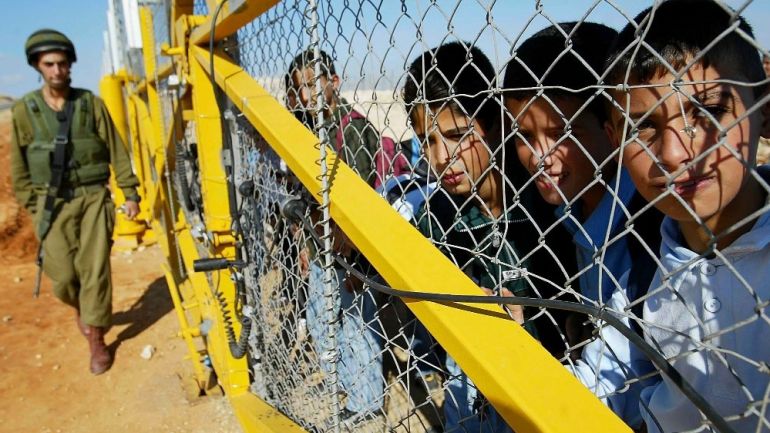Prof. Dr. Mohsen Mohammad Saleh
This article focuses on two significant points concerning the recent attempt by the Israeli occupation to raid the Jenin Refugee Camp (RC) (3–4/7/2023). Israel called the raid Operation Home and Garden, while the Resistance dubbed it Operation Strength of Jenin.
The first point revolves around the armed resistance and its potential to overcome the bottleneck it is in, survive and expand its influence.
The second point addresses the erosion of power in Ramallah and the decline of the Palestinian Authority (PA)’s role as a national project. Even the value of its functional role of in serving the occupation has diminished.
First: The Resistance and Overcoming the Bottleneck
Despite the Israeli army’s claim of a “very successful” operation in the Jenin RC, the facts on the ground suggest otherwise: Israel has failed to achieve its stated objectives, particularly in eliminating resistance strongholds in Jenin city and its RC, and inflicting significant losses on the resistance fighters and infrastructure.
The invasion involved over a thousand troops supported by 120 military vehicles and 17 airstrikes. The target was an RC covering an area no larger than half a square kilometer. Given the Israel’s military, technological and security capabilities comparable to those of major powers; its control over the occupied territory; and the collaboration of the world with the PA, heavy casualties were to be expected. Twelve Palestinians were killed, and around 100 others were injured, including 20 with severe wounds. Additionally, Israel reported the arrest of 30 Palestinian fighters and destroyed 300 houses, along with a significant portion of the RC’s infrastructure.
However, Israeli forces failed to reach approximately 300 armed resistance fighters, as Israel announced its withdrawal. Israel admitted to intelligence shortcomings, which became apparent on the second day of the operation. The Israeli forces failed to reach the most vital neighborhood, where the fighters were entrenched, known as “Jurat al-Dhahab,” nor could they reach “al-Hawashin” neighborhood. The resistance successfully set up well-planned ambushes in “al-Damaj” neighborhood and the mosque, inflicting significant losses on the Israeli forces. As is customary, Israeli occupation tried to conceal or downplay these losses. The resistance’s tactics, including guerrilla warfare strategies, avoiding direct confrontations, and implementing artificial barriers, smoke screens and camouflage nets, played a crucial role in preserving their larger force.
In this context, there are three indicators that are worth considering:
First: There is unity, coordination and integration among the resistance forces that participated in the battle, including the Palestinian Islamic Jihad (PIJ) Movement, Hamas, Fatah and others. This strong positive indicator suggests that resistance against the enemy should not necessarily wait for reconciliations, political agreements or the rebuilding of official institutions. Instead, this field unity can serve as a compelling element from the resistance base to the political leadership, paving the way for a genuine national unity based on the fundamentals and confronting the occupation.
Second: Resistance pockets have learned from their lessons and the high costs they have paid as a result of flashy maneuvers or previous security complacency. They have become more professional and capable of inflicting heavy costs on the occupation. This diminishes the criticisms that were directed towards them.
Third: The popular support, especially in Jenin, its RC and villages, has provided a wonderful example of embracing the resistance and its youth, with a high readiness to stand by, support and endorse them. We have witnessed dozens of inspiring examples that fill the hearts with pride and honor (similarly found in Nablus and other places). Perhaps the message found by the fighters in one of the evacuated houses beautifully represents this warm support. The message invites them to make use of the available food and provisions, and informs them of the best way to evacuate the house when needed, as well as the location of hidden money for their use if desired. It assures them that if the house is destroyed due to their presence, it will be considered a sacrifice, “including every single brick.”
These indicators mean that there are better opportunities for the resilience and continuity of the resistance, and even encourage the creation of similar resistance environments in other areas of the West Bank (WB).
However, on the other hand, one should not rush to conclusions about the decisive success of the resistance experiment. These strong resistance pockets are still under occupation, surrounded from all sides and face a vast imbalance of power. The PA in Ramallah still considers pockets hotspots as contradictory to its fundamental role.
Therefore, the risks of launching more severe strikes against these resistance groupings, using excessive destructive force, are still possible, especially if the effects and risks of these resistance pockets to Israel escalate, and Israel would come to fear the spread of these resistance patterns across WB. Additionally, Israel may view this operation as a “reconnaissance by fire” to determine what it may need in a future campaign, especially as the Palestinian people face the most extreme, ferocious and violent Israeli government in the history of Israel.
It appears that the resistance pockets are in a race against time to solidify their strength, expand their circle of influence, and maintain their popular support. Their aim is to reach a point where they become annihilation-proof, where the cost of uprooting them would become much greater than withdrawing and repositioning, and establishing new arrangements for WB.
In general, the required effort is to make the most of available resources, master the management of capabilities and opportunities, and understand the most suitable conditions for either keeping a low profile or expansion. On the other hand, who said that resistance action is subject to “cold” calculations? It is inherently a revolutionary action outside the traditional pattern, with its own conditions, criteria and unique qualitative weights, primarily linked to faith and human ingenuity. The Gaza model is the best example of this.
Second: The Erosion of the Ramallah Authority:
Since the al-Aqsa Intifadah (2000–2005), the PA has been facing gradual erosion, both in its ability to present itself as a national project and in its ability to transform itself into an independent Palestinian state on the 1967 borders. It has also struggled to market itself as a reliable Palestinian entity to the occupation, the US and their allies, in suppressing and marginalizing Palestinian resistance both popularly and politically. Its functional role in serving the occupation is now questioned by the forces that support it.
The Ramallah Authority has lost the trust of the majority of the Palestinian people (less than 20% trust its policies and actions). Its leadership has lost seriousness and credibility, especially after obstructing Palestinian reconciliation and cancelling the legislative and presidential elections in late April 2021.
Furthermore, Fatah, on which the PA relies for “legitimacy” and popular presence, suffers from severe divisions and internal conflicts within its factions, especially with the absence of figures capable of filling the void after Mahmud ‘Abbas. However, the most significant phenomenon, which ultimately benefits the resistance movement, is that broad and growing popular bases of Fatah cadres have expressed their anger towards the PA, its services and security performance, and even its leadership. They have shown a stronger inclination towards the resistance, and many of Fatah elements have joined its ranks. Meanwhile, the voices defending the PA and its practices have faded.
The anger towards the PA leadership (and even Fatah’s leadership) was reflected in the funeral of those killed in the Jenin RC, where figures coming to participate (specifically Mahmud al-‘Aloul and ‘Azzam al-Ahmad) were expelled or excluded. Despite the popular participation of Fatah’s youth elements in this anger, the PA leadership and its supporters tried to blame Hamas and launched a fierce media campaign against it. However, it was not proven that Hamas had any role in the incident, and the state of anger is a genuine sentiment sweeping the Palestinian street, especially since the security forces withdrew from the Jenin RC before the Israeli operation and even arrested fighters who were on their way to support their brethren in the RC, then returned after the Israeli operation to resume their oppressive role against their people.
It is too early to talk about the collapse of the PA, as there is still Israeli-US (and Arab) desire for its existence, as Prime Minister Netanyahu himself and his Defense Minister confirmed in the past few days. The PA has linked the daily lives of around 170 thousand employees, who support nearly one million Palestinians, to its institutions and agencies, and there is no practical alternative to fill the void as many see it.
On the other hand, there is a growing trend that diminishes the potential concerns about the collapse of the PA, despite the existence of Israeli plans to establish cantons in WB, similar to the “village leagues.” This trend cites that the field unity of the resistance action is a response to that, and the fact that the Palestinian people faced the occupation for 26 years (1967–1993) in the pre-PA and pre-Oslo era, demonstrated heroism, and successfully managed the blessed Intifadah of 1987–1993. They also foiled plans for any collaborative institutional structure for the Israeli occupation. The spread of resistance action is a natural response to the occupation, undermining the Oslo pretext and cover for its survival, and preventing it from remaining as a “five-star” colonization.
What concerns us here is the confirmation that there is a national consensus rejecting the PA’s security and functional role, and its erosion will continue until it faces its destiny either by redefining itself in harmony with the will of its people, or by ending its role and disappearing, or by isolating itself from influencing events and the course of history.
(Source: Al-Zaytouna Center)











